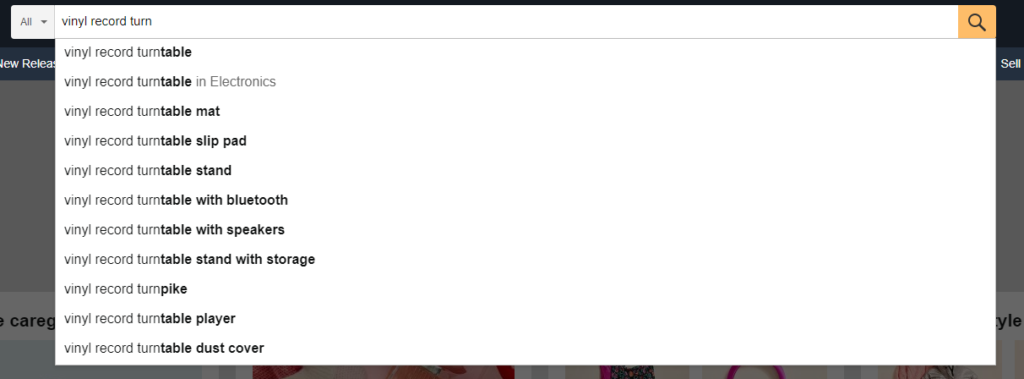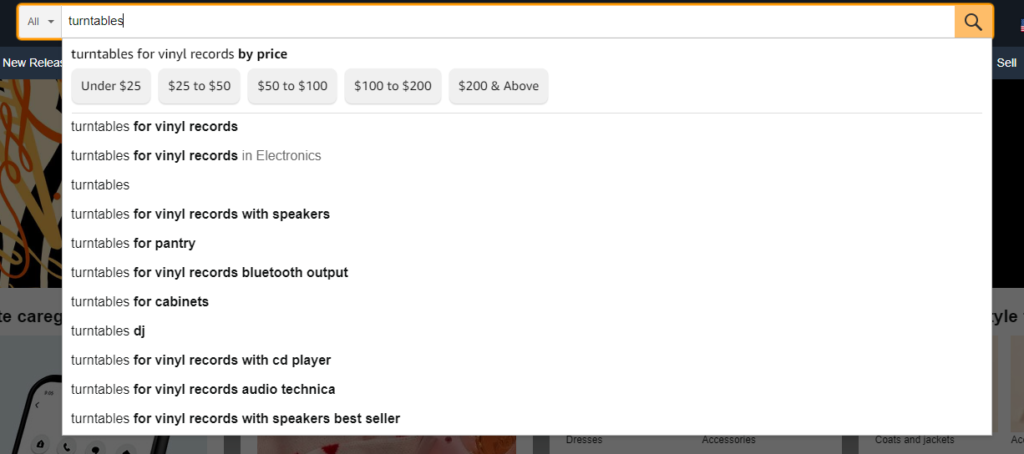
We talk a lot about what you need to do for your website and how to make it SEO-friendly for users and search bots in digital marketing.
But how well do you know Amazon SEO?
If you’re an eCommerce company and aren’t on Amazon by 2022, you may be missing out on sales.
When it comes to e-commerce, most people should be aware that Amazon is a powerhouse, a workhorse, and an old reliable.
Everyone wants their products to be available on Amazon because that is where their target audiences shop.
And those audiences use the platform a lot.
Amazon generates approximately $4,722 per second or approximately $17 million per hour. The sales behemoth ended the year with $469.8 billion in net sales, a 22 percent increase over 2020.
That’s why sellers want a piece of the action, and why ranking your products on Amazon’s results pages can be so difficult.
However, just like your website, you can use Amazon SEO to boost the visibility of your products.
Understanding the algorithm, what shoppers are searching for to find what they need, and how you can outperform your competitors are all important.
Here’s an in-depth guide to Amazon SEO for sellers.
The Workings of Amazon’s A9 Algorithm
Before we discuss Amazon SEO and how to optimize your product listings, it’s important to understand how Amazon’s A9 search algorithm works.
It’s similar but not the same as Google’s.
What is the main distinction?
Amazon queries are only for commercial purposes, as opposed to navigation or informational purposes as with Google.
Consider it simply.
You conduct a search. A9 knows you want to buy whatever you’ve been looking for.
It matches the query to a set of relevant products, which are displayed on a series of pages.
But how does Amazon choose those specific products?
Consider it similar to Google’s algorithms, but only for eCommerce.
Amazon considers the following factors when ranking products:
- Positive feedback from customers (better products will sell more and make more money for Amazon).
- Previous sales.
- Keywords that are relevant to the product are included in the product listing.
- Prices that are reasonable (not too high, not too low, based on the competition).
It’s important to note that, while the algorithm is always looking for relevance based on a query, historical data is also important, as mentioned in the preceding list.
Results that have previously pleased customers are likely to please customers in the future.
New Amazon sellers are thus faced with a conundrum: if Amazon prioritizes products with high sales, but you haven’t made any sales or accumulated any historical data for A9, how can you ever hope to climb Amazon’s rankings?
The answer is to perform Amazon SEO, beginning with keyword research to ensure that you are found by the shoppers who are important to you.
Conducting Amazon Keyword Research
An Amazon SEO strategy, like Google’s, must be based on keyword research.
Without the proper keywords in your rankings, your products will appear irrelevant and will not be visible to users.
In a moment, I’ll go over how and where to optimize your listings for keywords. First, we must understand where to look for keywords and how to conduct keyword research.
Using the Amazon search box is a great way to conduct keyword research that every Amazon seller should be aware of.
It will autocomplete your queries as you type them, effectively performing keyword research for you.
Consider the example in the screenshot below.

Assume you own an online music store and want to start selling my turntables on Amazon.
Allow me to look at what people are already searching for to get a sense of how to optimize your listings.
Obviously, [vinyl record turntable] will be a popular seed term with a lot of competition.
In this case, that isn’t the only search you should conduct.
You should keep looking for all the different types of turntables you can think of and see what comes up.
Consider the following example:

This search generates more ideas as the predictions become more specific.
Specific queries include [turntables for vinyl records], [turntables for vinyl records with speakers], and [turntables for vinyl records with cd player].
Those are for people who are further along in their purchasing processes.
They know exactly what they want. They simply want to look at the options.
In the search box, type in all the variations you can think of to get a good list of keywords for which you could potentially rank.
What are some other methods for conducting Amazon keyword research?
Basically, all of the other methods you’re aware of for conducting keyword research for Google.
To see the search volumes and difficulty ratings of these keywords, use free tools like Keyword Planner or paid tools like Semrush or Ahrefs.
If you sell the same products on a website, you can also look at your Google Search Console data to see how people find you on Google.
All of these methods should provide you with a good collection of relevant keywords to use to optimize your product listings.
Amazon Listing Enhancement
Once you’ve compiled a list of keywords, it’s time to put them to work optimizing your product listings.
You’re in luck if you’re already familiar with writing optimized product descriptions and other content for Google rankings.
Doing it for Amazon works in a similar manner.
You should begin with your product names.
Amazon requires titles to be no more than 200 characters long and to include words that accurately describe the product.
This is also an opportunity for sellers to include relevant keywords, but please don’t stuff them.
Also, don’t stuff keywords into the rest of your product description.
Where applicable, use keywords in your prose, bullet points, and technical details. However, they must be used correctly.
The key is to use the most relevant keywords that will also increase your chances of driving traffic to your products.
Long-tail keywords are also acceptable because not everyone can rank for those ideal seed terms.
Don’t forget that you can also add keywords to the back end of your product pages!
Even if customers cannot see them, they can help your visibility on Amazon.
Finally, don’t be afraid to write lengthy product descriptions.
Be specific. Please tell me a story.
It’s content, and it can help your products rank higher in search results.
Images of Amazon Products
Any post about Amazon SEO must include a discussion of product images.
Whether you sell on your own website or through Amazon, the right images can make or break your business.
People are there to buy something, and your written description can only take them so far.
You can spend as much time as you want to describe a vinyl record turntable.
You can discuss its colors, appearance, and features.
But none of this matters if no one can see what’s going on!
This is why product images, and not just any images, but high-resolution images (more than 1,000 pixels one way), preferably taken professionally, are so important.
Remember that Amazon now allows customers to zoom in on product images, so quality is extremely important here.
It’s important to note that Amazon does not always rank you higher based on the quality of your images.
You can and should include SEO-optimized alt text in your images so that Google can display them in image search results, but the real game here is to include images that show your product from all angles.
Allow your images to show all of the details because images can be just as effective as product descriptions in making a sale.
Another approach you should take for your Amazon product images is what is known as lifestyle images, or images that show people using the products in their intended ways.
What difference does it make?
Anything that encourages the customer to imagine using your products in their own home is a plus.
They can see the item’s size in relation to real-world objects and get a sense of how the item would be used.
Zoomable product images, as well as lifestyle images, are critical to your Amazon success.
Ratings and Reviews
As I previously stated, product reviews and ratings have a significant impact on where your products appear in Amazon’s search results.
From the standpoint of user experience, this makes perfect sense.
Amazon’s main goal, like Google’s, is to provide users with positive, useful experiences.
This is why Amazon reviews and star ratings are so important for achieving high product rankings.
Consider this: will Amazon want to show you a slew of one-star products on the first page of results for a query?
No one will benefit from that.
Amazon wants customers to buy things, so it will display products that a large number of people have purchased and liked.
What matters here are the number of stars and reviews your products have.
Which product do you think is more trustworthy: one with 17 reviews or one with 4,567 reviews?
Which set of reviews will give you a better idea of what to expect?
So, if Amazon rankings are influenced by product reviews, how do you get reviews? Amazon makes this easy with its Request a Review feature.
It’s always a good idea to contact customers after they’ve made a purchase and ask if they’d like to write a review.
The thing is, good products will always generate reviews.
When you make someone happy, they will want to share their joy with others.
Negative reviews will always occur, but the key is to respond quickly to see what you can do to improve the customer’s experience from this point forward.
Analytical Measuring of Product Performance
The final step in performing comprehensive Amazon SEO is to measure the performance of your products using analytics.
Again, if you optimize a website for Google rankings, you understand the importance of analytics.
When it comes to Amazon, you’ll want to track your SEO so that you can continue your product optimization strategy.
If you own a brand, you can now access Amazon’s Brand Analytics.
However, for all other sellers, you must use third-party apps that track elements such as keywords and product performance.
The majority of these tools are all-in-one solutions, which means you can perform keyword research, get help optimizing your listings, track your products and inventory, look at your finances, get competitor information, and track your Amazon SEO and paid media overall.
If you’re serious about making a living as an Amazon seller, investing in one of these software tools will be worthwhile. You simply cannot afford to go in blind and risk failing to make an impression among the crowd vying for a spot on page one.
What are the best tools?
Several Amazon analytics tools consistently receive high marks from reviewers.
Helium 10, Sellics, and DataHawk are a few examples.
Many of these businesses provide free trials or live demos to help you decide which tool is best for you.
A solid Amazon SEO strategy begins right now
Sellers on Amazon have a lot of work ahead of them if they want to succeed on the platform.
If you’re already familiar with optimizing content for Google, you’re already halfway there.
You know what you need to do if you know that Amazon rewards sellers who stand out with amazing products that wow customers.
These Amazon SEO hints will help you get the rest of the way.
Learn more from SEO and read A Beginner’s Guide to Amazon’s Affiliate Program.





One Comment